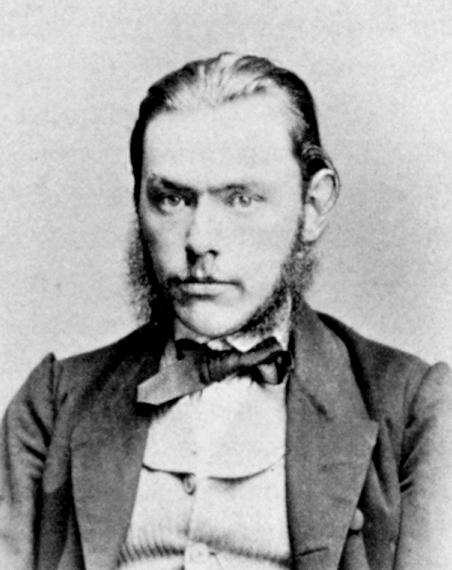Emil Nobel on:
[Wikipedia]
[Google]
[Amazon]
 Emil Oskar Nobel ( , ; a.k.a. Oscar; 29 October 1843 – 3 September 1864) was a member of the
Emil Oskar Nobel ( , ; a.k.a. Oscar; 29 October 1843 – 3 September 1864) was a member of the
Förfärlig olyckshändelse i Stockholm
Nya Dagligt Allehanda. 3 September 1864 * {{DEFAULTSORT:Nobel, Emil Oskar 1843 births 1864 deaths Emil Oskar Uppsala University alumni Deaths from explosion Industrial accident deaths
 Emil Oskar Nobel ( , ; a.k.a. Oscar; 29 October 1843 – 3 September 1864) was a member of the
Emil Oskar Nobel ( , ; a.k.a. Oscar; 29 October 1843 – 3 September 1864) was a member of the Nobel family
The Nobel family ( , ) is a prominent Swedes, Swedish and Russians, Russian family closely related to the history both of Sweden and of Russia in the 19th and 20th centuries. Its legacy includes its outstanding contributions to philanthropy and ...
.
Biography
Emil Nobel was born inSaint Petersburg
Saint Petersburg ( rus, links=no, Санкт-Петербург, a=Ru-Sankt Peterburg Leningrad Petrograd Piter.ogg, r=Sankt-Peterburg, p=ˈsankt pʲɪtʲɪrˈburk), formerly known as Petrograd (1914–1924) and later Leningrad (1924–1991), i ...
, Russia. He was the youngest son of Immanuel Nobel
Immanuel Nobel the Younger ( , ; 24 March 1801 – 3 September 1872) was a Swedish engineer, architect, inventor and industrialist. He was the inventor of the rotary lathe used in plywood manufacturing. He was a member of the Nobel family and the ...
(1801–1872) and Karolina Andrietta Ahlsell (1803–1889). He was the brother of Robert Nobel
Robert Hjalmar Nobel ( , ; 4 August 1829 – 7 August 1896) was a Swedish businessman, industrialist and investor. He was the founder of Branobel, and a pioneer in the Russian oil industry.
Biography
Robert Nobel was born in Maria Magdalena pa ...
, Ludvig Nobel
Ludvig Immanuel Nobel ( ; russian: Лю́двиг Эммануи́лович Нобе́ль, Ljúdvig Emmanuílovich Nobél’; sv, Ludvig Emmanuel Nobel ; 27 July 1831 – 12 April 1888) was a Swedish-Russian engineer, a noted businessman and a ...
and Alfred Nobel
Alfred Bernhard Nobel ( , ; 21 October 1833 – 10 December 1896) was a Swedes, Swedish chemist, engineer, inventor, businessman, and Philanthropy, philanthropist. He is best known for having bequeathed his fortune to establish the Nobel ...
. In 1842, Immanuel Nobel opened a workshop with foundry in St. Petersburg returning to Sweden in 1859 with his youngest sons Emil and Alfred. Emil was the only member of the family to go to college, attending the University of Uppsala.
Emil died together with several other factory workers, the victim of an explosion while experimenting with nitroglycerine at Nobels Sprängolja, his father's factory at Heleneborg in Stockholm
Stockholm () is the Capital city, capital and List of urban areas in Sweden by population, largest city of Sweden as well as the List of urban areas in the Nordic countries, largest urban area in Scandinavia. Approximately 980,000 people liv ...
. At the time, Nobel was a student in Uppsala, but also helped in the factory. After the explosion, production of nitroglycerin was banned in the factory, but continued close to Heleneborg on an anchored barge in a bay of Lake Mälaren
A lake is an area filled with water, localized in a basin, surrounded by land, and distinct from any river or other outlet that serves to feed or drain the lake. Lakes lie on land and are not part of the ocean, although, like the much larger ...
.
His brother Alfred was not in the factory at the time of Emil's death but later managed to stabilize dynamite
Dynamite is an explosive made of nitroglycerin, sorbents (such as powdered shells or clay), and Stabilizer (chemistry), stabilizers. It was invented by the Swedish people, Swedish chemist and engineer Alfred Nobel in Geesthacht, Northern Germa ...
with a diatomaceous earth
Diatomaceous earth (), diatomite (), or kieselgur/kieselguhr is a naturally occurring, soft, siliceous sedimentary rock that can be crumbled into a fine white to off-white powder. It has a particle size ranging from more than 3 μm to le ...
called kieselguhr
Diatomaceous earth (), diatomite (), or kieselgur/kieselguhr is a naturally occurring, soft, siliceous sedimentary rock that can be crumbled into a fine white to off-white powder. It has a particle size ranging from more than 3 μm to le ...
.
References
Other sources
Förfärlig olyckshändelse i Stockholm
Nya Dagligt Allehanda. 3 September 1864 * {{DEFAULTSORT:Nobel, Emil Oskar 1843 births 1864 deaths Emil Oskar Uppsala University alumni Deaths from explosion Industrial accident deaths